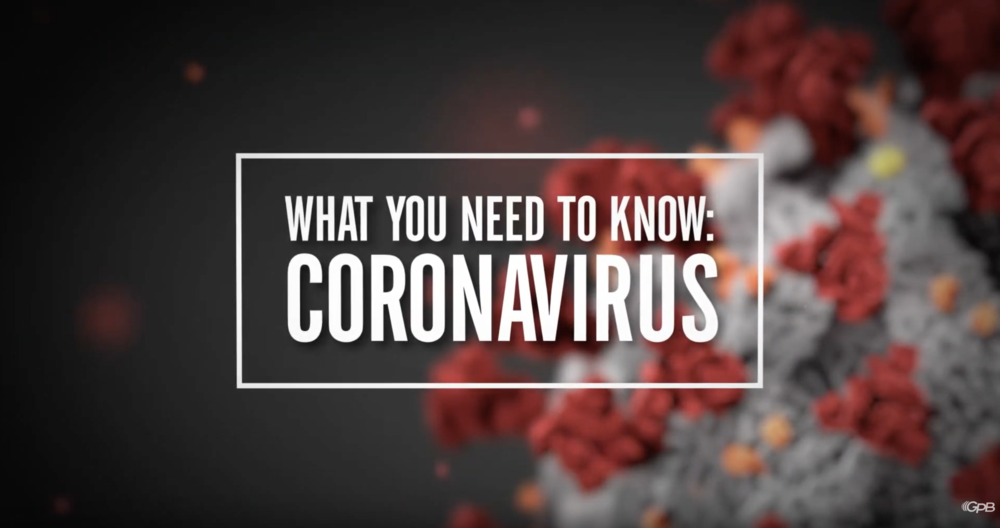Section Branding
Header Content
What You Need To Know: Presidential Powers In Times Of Crisis
Primary Content
Georgia Public Broadcasting’s new series What You Need To Know: Coronavirus provides succinct, fact-based information to help you get through the coronavirus pandemic with your health and sanity intact.
During President Trump’s almost daily updates to the nation on the pandemic, he’s left legal scholars and journalists discussing the limits of presidential power. Historian Kenneth C. Davis discusses the limits of presidential power in times of crisis with Political Rewind producer Sam Bermas-Dawes.
So, does the president have, quote, "total authority" over the states in situations like these?
That's not what this says. I have a copy of the Constitution here. And while the president has very significant powers, he does not have total authority. But it's interesting because all of these questions that we're hearing and talking about right now in the midst of this pandemic crisis— and it is a real crisis; we've been through many crises in our history. But the arguments that are being made are arguments that were being talked about in 1787.
The founders and the framers of the Constitution got together in Philadelphia in secret, by the way, behind closed doors and locked windows. They didn't want anybody to hear what was going on.
The biggest debate they had was really what powers to give this office, the executive branch. They were inventing something new. And the thing they feared more than anything— if you go back and read the notes of the Constitution Constitutional Convention, they feared an elected monarch. They'd just come through a revolution— eight years of revolution— getting rid of a monarch in control of the United States of America. And they didn't want to create their own.
And one of the things that they feared more than anything else, because they knew that the history of republics going back to ancient Rome, was often that a strong man like Julius Caesar would come along and take down a republic, especially if he had an army at his side. And they were giving the president the new executive control of the army. So these are debates to go back to the very basis of our constitutional system.
What were some of those safeguards that they set up in the beginning there?
Well, we talk a lot about checks and balances. And obviously we have three branches of government. They are supposedly co-equal branches. I think that the pendulum swings between them very often. Amongst them, I should say, I don't know what pendulum could swing among three things, but this one does.
The swing has been powerful, obviously, in the 20th century, particularly with the growth of the federal bureaucracy under Franklin D. Roosevelt in response to, first, the Great Depression and then World War II. There came to be much more power concentrated in the presidency, but there's always been this trade off between presidential power and rational power.
Obviously, the Constitution has some basic checks. Congress can pass a bill. The president can veto it. Congress then can override that veto. It's very difficult. You need a supermajority to do so.
The Supreme Court, obviously, you can rein in a president who does something that is considered beyond the bounds. The way they did with Franklin D Roosevelt in the 1930s during the Depression, by calling many of the New Deal legislation and New Deal agencies that had been created unconstitutional during Richard Nixon's era.
They, of course, issued the Pentagon Papers ruling and then the Watergate tapes ruling that were very powerful repudiations of a president's power. So there's always been that tension between the three branches of government.
But the president's still, in modern times, still has an awful lot of power at his jurisdiction, especially in the time of an emergency, as we are in right now, a true emergency.
The president recently has signed the Defense Production Act, which allows him to nationalize some industries. How has that act been used in the past? And how does that compare to how this current president is using it?
\Well, it's interesting, of course, when we think about it. The Defense Act really was, again, a wartime act and it was during Truman's era. And it's been used many times and often with the obvious need when we go to war.
You certainly need certain things manufactured for a war effort. In this case, right now, we're having a tremendous amount of dispute over this because it seems that the president does have the authority under that wartime production act to get more production of some of the things that people are desperately asking for on the state level, that they don't have the authority or the power or the ability to produce, whether it's masks or ventilators or any of a number of other items.
The president seems to have been reluctant so far to press that issue. And it's it's odd because this is a president who seems quite at home with the uncomfortable, with the idea of using all of the powers that he has or even thinks he has to do certain things, yet does not seem to be taking this very immediate step to demand production of some things that are clearly needed in the states if they are going to respond to this very, very urgent crisis.
By the way, 102 years ago, we had a pandemic. It was called the Spanish Flu, the Spanish influenza. I've written a book about it called More Deadly Than War and 2% of the population— 2% of the people who got sick died. And that was 675,000 Americans in about the space of a year. If we had a mortality rate of 2% with this current virus, we'd be talking about many, many more people dying, tens of millions of people.
So the lessons from 1918 for us today and for the president, I think are very powerful. And that's one of the reasons it's so important to understand this history during that crisis. The president did very, very little to deal with. And that was President Wilson to deal with the pandemic crisis, because the nation was at war. And he was really single-minded about getting men and troops and ships and guns and tanks to the battlefields and really left the pandemic to take care of itself. There was no federal government reaction other than Congress authorizing some money that the states could spend. But this is a very clear case of a president who also didn't seize the public health issue as important as the war effort in 1918. Really interesting piece of history that we can learn a lot today.


